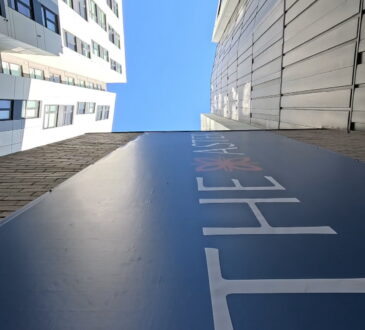What went wrong with the reits that allowed people invest in property? – The Irish Times

Undervalued assets, tricky disposal rules, poor global sentiment; the real-estate investment trust (reit) regime, which promised so much when it first came into play back in 2013, is no longer seen as fit for purpose by some industry players, with all but one reit no longer listed on the Iseq index.
“It’s not working the way that it would be nice to be working,” says Paul Moroney, a tax partner with PwC.
But, while industry sees issues with the regime rules in Ireland, it’s not the only problem. Globally, reits have struggled. Some say it’s time for a change, but what are the issues? And does it really matter if Irish reits fade into obscurity?
Reits are companies that own or operate income-generating property and allow investors to get exposure to these properties. They can specialise in residential property, commercial, retail, offices or a mix of the various categories.
They were first introduced to Ireland in the Finance Act 2013 as a tool to help attract new investment into the property market in the wake of the financial crisis by removing the double layer of taxation that would otherwise apply on investing in property via a corporate vehicle.
A globally recognised vehicle, understood by investors worldwide, it was seen as a practical way of getting international capital into the Irish property market.
As the European Public Real Estate Association said in a recent submission to the Department of Finance, “the introduction of reit legislation by national governments, including Ireland, has always been seen as an opportunity to attract new sources of capital into the local real-estate market in a more open, more transparent, more liquid and advantageous form of investment”.
There are specific features of Irish reits: they must have a stock exchange listing; distribute at least 85 per cent of profits annually; and they must derive at least 75 per cent of income from property rental, among other things.
The decline of reits
Green Reit was the first such structure to launch here, listing on the Irish Stock Exchange in July 2013. But the reit, whose assets included the Horizon Logistics Park close to Dublin Airport and One Molesworth Street in Dublin 2, was sold for €1.34 billion six years later to UK property firm Henderson Park.
At the time, its chairman, Gary Kennedy, bemoaned the fact that the stock traded at a discount to the underlying net value of the properties in its portfolio.
Hibernia Reit was founded by father and son team Kevin and Bill Nowlan in December 2013. Its holdings included 1WML in Dublin’s Windmill Quarter and Wyckham Point in Dundrum.
Similarly, it was acquired by Canada’s Brookfield Asset Management in a €1.1 billion takeover in June 2022 in a move that saw Hibernia delist from the Irish Stock Exchange and change its name to Hibernia Real Estate Group. It is still involved in the property sector in Ireland, focusing on prime offices and redevelopment sites in central Dublin.
Yew Grove focused on assets outside of Dublin city centre, with 23 properties including IDA business parks in Athlone and Waterford and a number of office blocks in Millennium Park outside Naas, Co Kildare. But in 2021 it was acquired by a Canadian property group, in this case Slate Office Reit, now known as Ravelin Properties Reit.
Core Industrial Reit, a logistics and industrial specialist, mooted a €225 million flotation in 2018, but it was subsequently pulled.
That leaves Ires Reit, which is known as Ireland’s largest private residential landlord. It, too, has been the subject of sale discussions after activist investor Vision Capital tried to push through a sale or a break-up of the business.
What has gone wrong?
So what has gone wrong and why is the model apparently unsustainable for investors in Ireland at a time when we are still seeking international investment?
One issue is the regime itself, something which came up repeatedly in submissions to the recent funds review at the Department of Finance.
Many industry players see the distribution requirement as a key stumbling block for the Irish reits regime. In Ireland, a reit must distribute 85 per cent of its rental profits annually by way of a dividend. This limits the amount of cash that can be reinvested for growth in new properties.
In Ireland, reits must also maintain a European Union main stock market listing. In its submission to that Department of Finance funds reviews, Deloitte recommended discontinuing the listing requirement, noting that it is “onerous, time-consuming and costly”, and pointing to rules in the United States and the Netherlands, which don’t require a reit to be listed.
“Ireland has also had rent regulations that are more severe than in other countries,” says Colin Grant, a reits analyst with Davy.
Another issue is commercial stamp duty. Back in 2017 it was levied at a rate of just 2 per cent; that has since more than trebled to 7.5 per cent.
And Irish reits are subject to the Alternative Investment Fund regime, unlike those in countries such as France and Belgium. “This classification results in significant annual costs for Irish reits, and negatively impacts the attractiveness of the Irish reit regime,” says industry association Irish Institutional Property, arguing that Irish reits should not be regarded as alternative investment funds.
Disposal rules are another bugbear and among those that have caused the greatest difficulties. Back in 2019, a new rule was introduced which required a reit to distribute, or reinvest, any proceeds from the disposal of a property within 24 months.
This period is seen to be too tight.
“Those changes should be reviewed and reconsidered as it is highly unlikely another reit could be launched under the current rules,” said Goodbody in its submission, noting that these reinvestment conditions are “not aligned with international norms and limit the ability of the reit to react to the property cycle in the best interests of shareholders”.
Many would like to see the relevant period increased.
“It wouldn’t be a common feature in other reit regimes across Europe,” says Moroney, adding that while the two-year rule “might seem like a relatively good period of time”, property is cyclical, and there will be times when it might not make sense to buy a property within that time frame. As such, PwC has suggested a time frame of 48 months.
Uncertainty on the taxation front has also been identified as an obstacle.
“There has been quite a lot of tax changes in a short space of time, which wouldn’t have been flagged to investors,” says Moroney.
Global picture
For Grant, the issues are broader than just the Irish regime. Yes, reits in Ireland may have traded at a discount to their net asset value (NAV); but as Grant notes, this is not unusual to see in the global property sector.
“Capital is pouring into tech-related stocks,” says Grant, adding that this is leaving Ireland and Europe behind in terms of capital flows.
Monetary policy and quantitative easing have pushed global yield curves up in recent years, impacting property valuations. This has impacted the share prices of reits globally, while the increase in yield curves pushed up the cost of debt, a “big headwind” for reits, says Grant.
European reits are now trading at their lowest valuation to the US stock market in 25 years. Ironically, one of the stronger performers is Ires Reit, which is the highest-rated stock in Europe within the private rental sector.
Reits also never really took off from an investment perspective in Ireland.
In some countries, such as the US and Canada, domestic retail investors typically account for about 50 per cent ownership of reits. In Ireland, however, Grant says it would be “considerably less than that”.
Performance is obviously a factor but so too perhaps is the marketing – or lack thereof – of the product here. Reits don’t pay commission on sales, unlike fund products from the life companies or other property structures, which may make financial advisers less likely to recommend them.
Why bother?
At a time of a chronic housing shortage, anything which might attract international capital to Ireland is seen as welcome.
“It’s important to have as many products available as possible to attract investment – not just from Irish investors but foreign investors also,” says Moroney, “Improving its attractiveness to the market, that can only be a good thing for Ireland.”
According to the lobby group Irish Institutional Property, Irish reits have thus far facilitated the development of 765 residential units and 283,836 square metres of commercial property – developments which might otherwise not have been developed.
And encouraging more reits might encourage further development.
“Given the scale of the housing crisis in Ireland, we need to support all parties that can help to resolve it,” says Grant, adding that while reits are never going to be the “full solution”, they are an element of a functioning property market.




